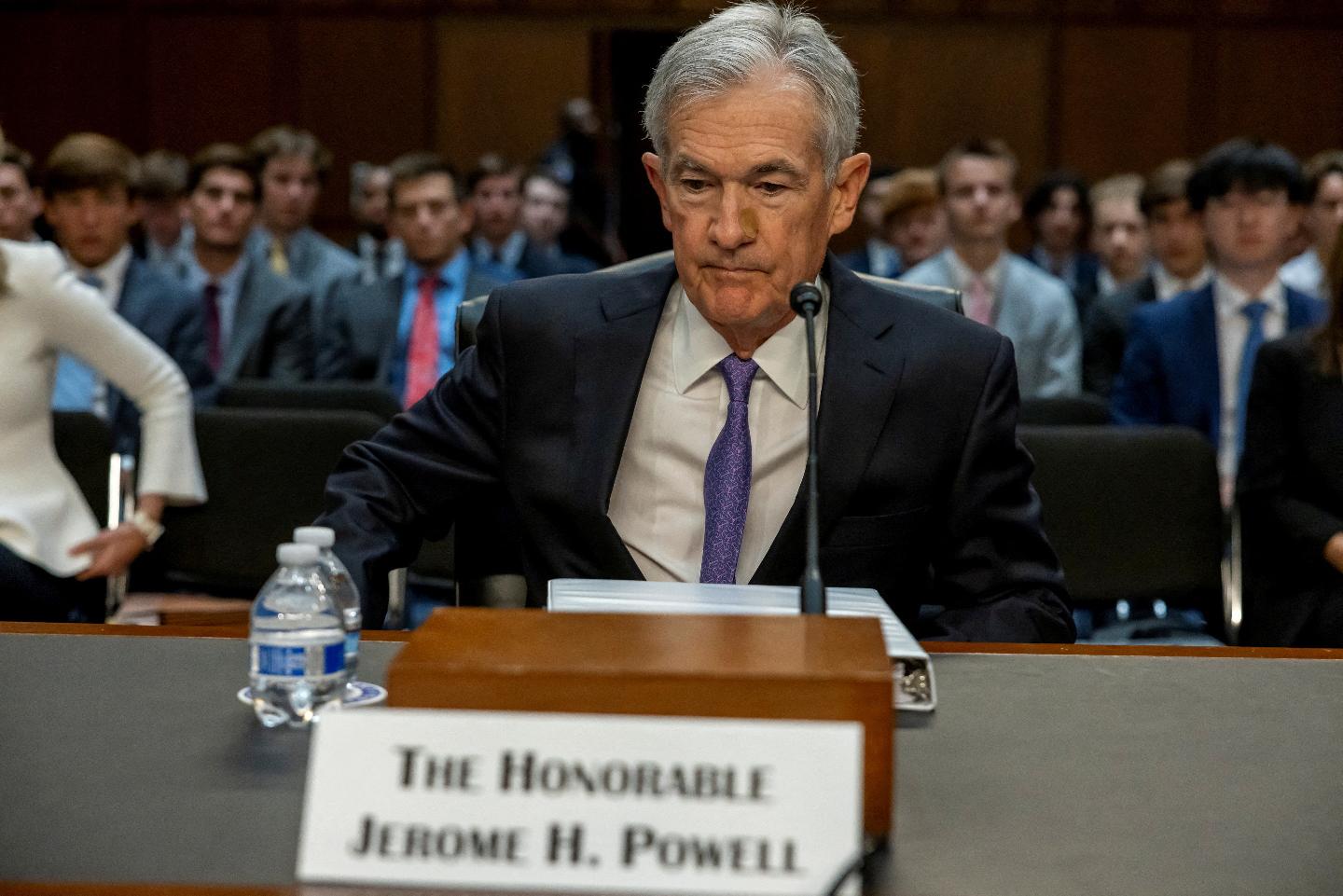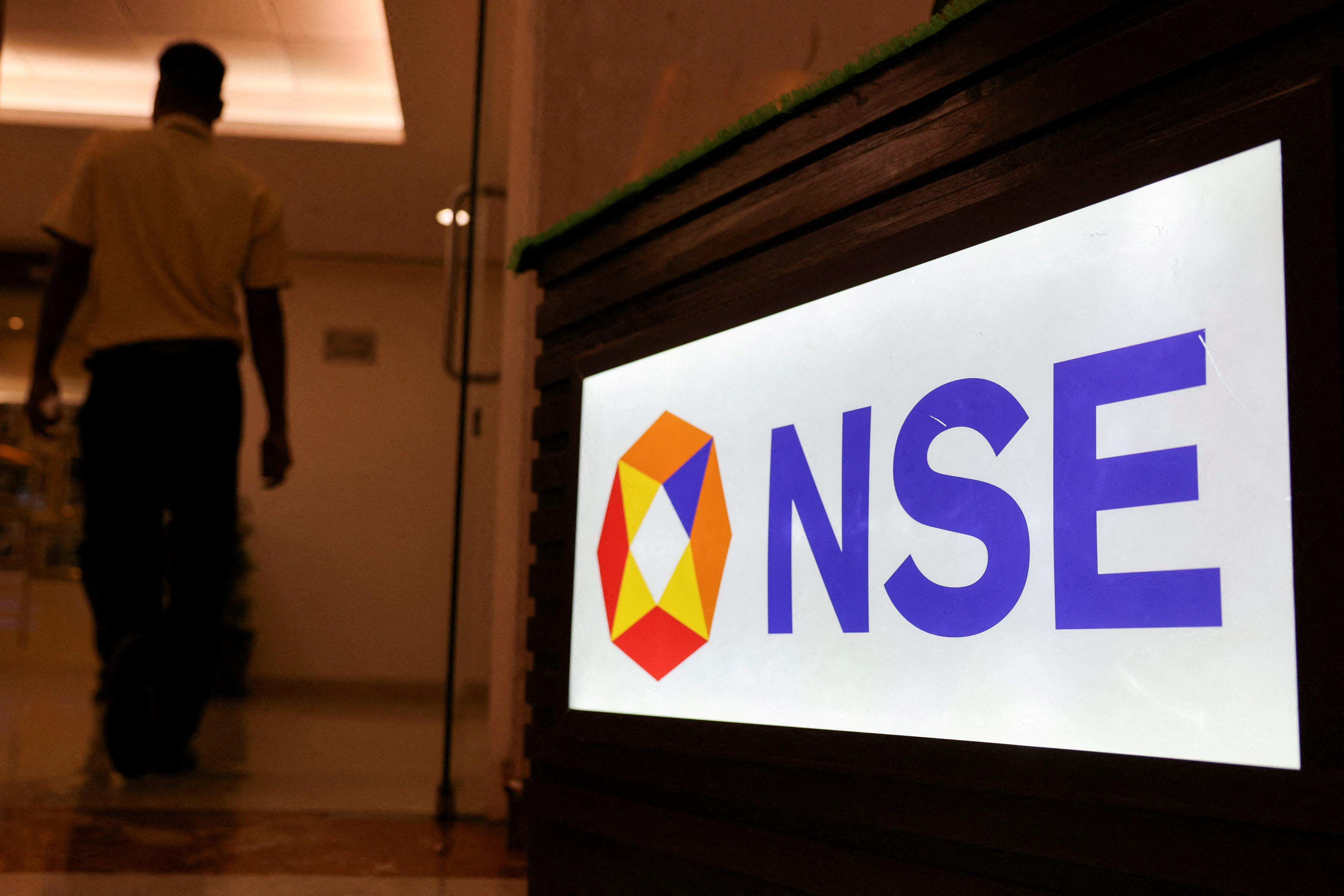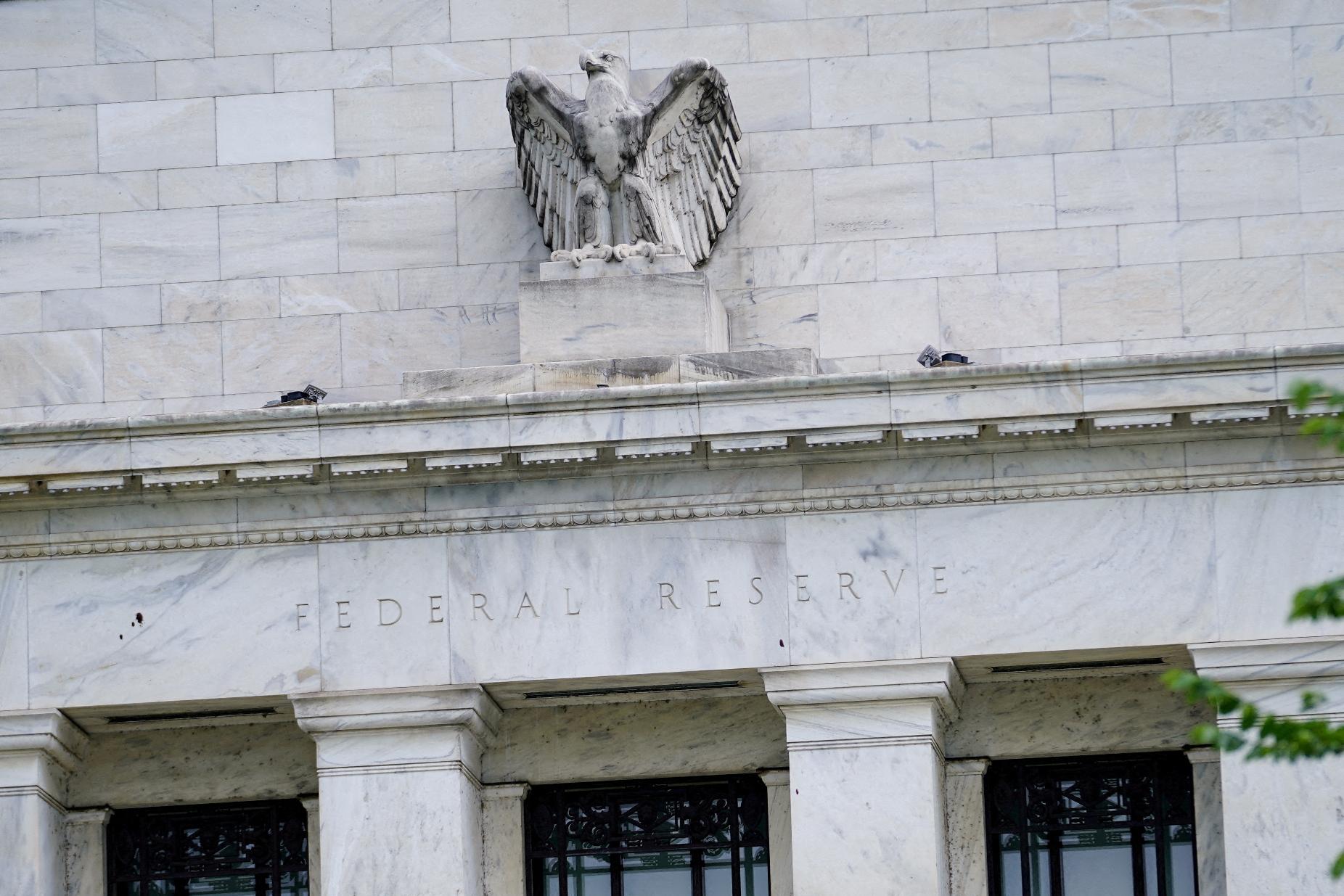
2024-09-16 05:04
LONDON, Sept 16 (Reuters) - When the Federal Reserve delivers a widely-anticipated interest rate cut on Wednesday, its first in four years, the move will resonate well beyond the United States. The size of a first move and the scale of overall easing remains open to debate, while a looming U.S. election is another complicating factor for global investors and ratesetters looking for a steer from the Fed and pinning hopes on an economic soft landing. "We don't know yet what kind of cycle this is going to be - will it be like 1995 when there was just 75 bps of cuts or 2007-2008, when there was 500 bps," said Kenneth Broux, head of corporate research, FX and Rates at Societe Generale. Here's a look at what is in focus for world markets: 1/ FOLLOW THE LEADER In spring, as U.S. inflation proved stickier than expected, investors questioned how far others such as the European Central Bank or the Bank of Canada could cut rates if the Fed stayed on hold this year before their currencies weakened too far, adding to price pressures. U.S. cuts finally starting comforts regions facing weaker economies than the United States. Traders added to bets for rate reductions by other central banks as Fed rate-cut expectations grew recently. Yet they price fewer cuts in Europe than for the Fed, with the ECB and Bank of England sounding more vigilant around remaining inflation risks. Confidence in Fed cuts starting is a boon for bond markets globally that often move in lock step with Treasuries. U.S., German and British government bond yields are all set for their first quarterly fall since end-2023, when a Fed pivot was anticipated , , . 2/ BREATHING SPACE Lower U.S. rates could give emerging market central banks more room for manoeuvre to ease themselves and support domestic growth. Around half of the sample of 18 emerging markets tracked by Reuters have already started cutting rates in this cycle, front-running the Fed, with easing efforts concentrated in Latin America and emerging Europe. But volatility and uncertainty around the U.S. Presidential election clouds the outlook. "The U.S. election will have a major bearing on this because, depending on various fiscal policies, it really complicates the cutting cycle," said Trang Nguyen, global head of EM credit strategy at BNP Paribas. "We could see more idiosyncratic actions among central banks on the back of that." 3/ STRONG DOLLAR REPRIEVE? Those economies hoping U.S. rate cuts will weaken the robust dollar further, lifting their currencies, may be disappointed. JPMorgan notes the dollar has strengthened after a first Fed cut in three out of the last four cycles. The dollar outlook will be driven largely by where U.S. rates are relative to others. The safe-haven yen and Swiss franc could see their respective discounts to U.S. rates almost halve by end-2025, Reuters polls suggest, while sterling and the Australian dollar may only acquire a marginal yield advantage over the dollar. Unless the dollar becomes a real low-yielder, it will continue to hold its appeal among non-U.S. investors. Asian economies, meanwhile, have led markets' front-running of U.S. cuts, with South Korea's won, the Thai baht and Malaysian ringgit surging through July and August. China's yuan has wiped out year-to-date losses versus the greenback. 4/ RALLY ON A global equity rally, which faltered recently on growth fears, could resume if lower U.S. rates boost economic activity and means recession is avoided. World stocks (.MIWO00000PUS) , opens new tab tumbled more than 6% in three days in early August following weak U.S. jobs data. "You always have a wobbly market around the first cut because the market wonders why central banks are cutting," said Barclays head of European equity strategy Emmanuel Cau. "If you have a cut without a recession, which is the mid-cycle script, usually the markets tend to go back up," Cau said, adding that the bank favoured sectors benefiting from lower rates, such as real estate and utilities. A U.S. soft landing should also play well in Asia, although the Nikkei has fallen more than 10% from July's record high on a rising yen and as Japan's rates rise. 5/ TIME TO SHINE In commodities, precious and base metals such as copper should benefit from Fed rate cuts, and for the latter the demand outlook and a soft landing are key. Lower rates and a weaker dollar, reducing not just the opportunity cost of holding metals but also of buying them for those using other currencies, could fuel momentum. "High rates have been a critical headwind to base metals, driving a significant negative physical demand distortion from destocking and weighing on capital intensive end-demand segments," said MUFG's Ehsan Khoman. Precious metals could also gain. Gold, which typically has a negative relationship with yields as most demand is for investment purposes, usually outperforms other metals during rate cuts. It is at record highs, but investors should be cautious, said the World Gold Council's John Reade. "Speculators on the Comex gold futures markets are positioned for this," said market strategist Reade. "It could be a case of buying the rumour and selling the fact." Sign up here. https://www.reuters.com/markets/global-markets-fed-graphic-pix-2024-09-16/

2024-09-16 04:55
BENGALURU, Sept 16 (Reuters) - Indian shares rose to record highs on Monday, underpinned by metals amid a weaker dollar, while Bajaj Housing Finance (BAJO.NS) , opens new tab listed at more than double its issue price after a stellar initial public offering (IPO) last week. Benchmarks indexes NSE Nifty 50 (.NSEI) , opens new tab and S&P BSE Sensex (.BSESN) , opens new tab were up about 0.3% each at all-time highs, as of 10:08 a.m. IST. Twelve of 13 major sectors logged gains. Metals (.NIFTYMET) , opens new tab gained 1% as a softer dollar made the greenback-priced commodity more affordable for overseas buyers. Expectations of an improved demand and China stimulus also pushed base metal prices higher over the past few sessions. Energy index (.NIFTYENR) , opens new tab rose nearly 1%, while consumer index (.NIFTYFMCG) , opens new tab, which have outperformed the benchmark Nifty 50 since the start of July, eased 0.4%. The broader, more domestically focussed small- (.NIFSMCP100) , opens new tab and mid-caps (.NIFMDCP100) , opens new tab rose about 0.4% each. Shares of Bajaj Housing Finance (BAJO.NS) , opens new tab, the second-biggest home loan financier in the country by assets under management (AUM), debuted at more than double the offer price of 70 rupees. Investors had bid for 64 times the shares on offer in the company's IPO, the hottest so far in 2024. "The undertone of the market is bullish, on the back of expectations of better festival demand due to good progress on the monsoon front and the expected U.S. rate cut," said analysts at Centrum Institutional Equities. Both benchmark indexes closed flat in the previous session, but logged their best week since the end of June ahead of a potential reduction in U.S. rates on Wednesday. The odds of a 50-basis-point Fed cut have risen to 59% from 30% a week earlier. An aggressive 50-bps rate cut could bring in additional foreign inflows and boost domestic equities, two traders said. Among individual stocks, Indian rice companies such as KRBL (KRBL.NS) , opens new tab and LT Foods (LTOL.NS) , opens new tab rose 5% each after the government removed a floor price for basmatic rice exports. Realty company Macrotech Developers (MACE.NS) , opens new tab climbed 4% after Nomura initiated coverage with "buy" rating, citing "solid earnings visibility." Sign up here. https://www.reuters.com/world/india/indian-shares-open-marginally-higher-metals-shine-2024-09-16/

2024-09-16 04:33
A look at the day ahead in European and global markets from Wayne Cole. It's finally decision time for the U.S. Federal Reserve and the market is split on whether it will cut its key interest rate by 25 or 50 basis points, though fund futures picked up a bid this morning and now imply a 59% chance of an outsized move. The analyst community is more cautious, with 92 of 101 forecasters polled by Reuters tipping 25bps. JPMorgan is notable in predicting a larger cut, arguing rates are a full percentage point too restrictive given the stage of the economic cycle. With inflation slowing, a sizeable cut would be needed just to stop real interest rates from climbing. Moreover, the next meeting is not until early November which is one reason markets have 114 basis points of easing priced in by Christmas and a further 142 basis points for 2025. That meeting will also be just two days after the presidential election, making a move then politically charged. Speaking of the election, Republican contender Donald Trump is safe after the FBI foiled another apparent attempt on his life. Betting site PredictIt continues to have Trump at 47 cents and Kamala Harris a cent down at 56 cents. All this, combined with holidays in Japan and China, make for a cautious start in Asian trade with most equity markets little changed. The dollar was pinned at 140.50 yen as the Japanese currency keeps leading the charge higher. It has fallen the most this year so has the most room to rally. A break of 140.00 would open the way to a low from last January at 127.215. Sentiment was not helped by data on Chinese retail sales, industrial output and house prices over the weekend which merely underscored the need for more economic stimulus from Beijing. Among other central banks meeting this week, the Bank of England is expected to hold its policy interest rate at 5.0% by all 65 analysts polled, though the market implies a 31% chance of a surprise cut. Inflation figures on Wednesday should help refine the odds. The Bank of Japan is considered certain to stand pat on Friday but may lay the groundwork for tightening in October. South Africa's central bank is tipped to start its easing campaign this week, while policymakers in Norway are seen on hold. Key developments that could influence markets on Monday: - Germany wholesale price inflation, EU trade balance - New York Federal Reserve manufacturing index - U.S. three-month, six-month T-bill auctions Sign up here. https://www.reuters.com/markets/europe/global-markets-view-europe-2024-09-16/

2024-09-16 04:11
LAUNCESTON, Australia, Sept 16 (Reuters) - China boosted crude oil inventories in August by the biggest amount in 14 months, confirming that the rebound in imports was driven by stockpiling and not by any recovery in fuel consumption. A total of 1.85 million barrels per day (bpd) were added to either commercial or strategic storages, according to calculations based on official data. This was the biggest flow to inventories since June 2023, when 2.1 million bpd were added to stockpiles, and was also a sharp increase from the 280,000 bpd added in July. China doesn't disclose the volumes of crude flowing into or out of strategic and commercial stockpiles, but an estimate can be made by deducting the amount of crude processed from the total of crude available from imports and domestic output. China's refineries processed 59.07 million metric tons of crude in July, equivalent to about 13.91 million bpd, according to data released on Sept. 14 by the National Bureau of Statistics. This was up a tiny amount from July's 13.908 million bpd, which was the weakest month for refinery throughput since October 2022. August's processing was also down from the 15.23 million bpd for the same month last year. The world's biggest crude importer saw arrivals of 11.56 million bpd in August, while domestic output was 4.20 million bpd, given a total of 15.76 million bpd available to refineries. Subtracting the volume processed of 13.91 million bpd leaves a surplus of 1.85 million bpd. For the first eight months of the year, China added 1.11 million bpd to inventories, about 300,000 bpd more that for the same period last year and an acceleration from the 800,000 bpd stored for the first seven months of the year. With refinery processing remaining soft, the question is why did China's refiners buy excess volumes of crude oil for August delivery? The answer is most likely the declining price trend that prevailed when August-arriving cargoes were arranged. PRICE IMPACT Cargoes that arrived in August were most likely arranged in May and June, a time when global crude prices were trending lower. Global benchmark Brent futures reached their highest level so far this year of $92.18 a barrel on April 12, before starting a downtrend to a low of $75.05 on Aug. 5. This means that China's refiners would likely have been encouraged to buy more crude during this window, meaning August and September imports may be fairly strong relatively to the earlier months this year. However, Brent crude staged a small rally after the Aug. 5 low, reaching a high of $82.40 a barrel on Aug. 12, and then staying in a fairly narrow range either side of $80 until the end of the month. Since then, global demand concerns, especially in China, have seen Brent fall sharply, hitting a 32-month low of $68.68 a barrel during trade on Sept. 10. The contract has since recovered slightly to end at $71.61 a barrel on Sept. 13. The past buying pattern of China's refiners suggest that they have become price-sensitive in recent years, buying excess crude when they deem oil to be cheap, but turning to inventories when they believe prices have risen too high, or too quickly. In some ways this has the effect of stabilising the market, as weak prices draw more cargoes to China, while any strong rally results in lower volumes, which tends to cap price gains. If China is acting as some sort of market smoother, it's likely mixed news for exporter groups such as OPEC+. It means that when prices decline, China will buy more, but conversely it becomes harder to get a sustained rally, even when demand is driving the price higher. China has shown it's capable of swinging its imports by around 2 million bpd, depending on circumstances. While some 2% of the global crude market doesn't sound massive, it's about 5% of the total seaborne volumes and therefore likely enough to exert influence of the direction of prices. The opinions expressed here are those of the author, a columnist for Reuters. Sign up here. https://www.reuters.com/markets/commodities/china-stored-massive-volumes-crude-oil-august-soft-prices-russell-2024-09-16/

2024-09-16 03:20
BUENOS AIRES, Sept 15 (Reuters) - Argentina's President Javier Milei said during a presentation to Congress on Sunday on the 2025 budget that he would defend his government's commitment to maintaining fiscal balance and veto all bills that threaten it. Milei, who took office in December, adopted stringent austerity measures to tackle rampant inflation and stabilize the economy, and has called a balanced budget non-negotiable. He stated he would only consider increasing expenses if spending elsewhere were to be reduced in equal measure. "If not, it will be vetoed," he said. Milei also said his aim was to maintain fiscal balance, regardless of macroeconomic issues. "This draft budget...has a methodology that protects the fiscal balance no matter what the economic scenario is," he said. The draft budget foresees the economy expanding 5% in 2025, with inflation at 18.3% and the exchange rate reaching 1,207 pesos per dollar by the end of the year. It also projects gross domestic product growing 5% in 2026 and 5.5% in 2027. Sign up here. https://www.reuters.com/world/americas/argentinas-milei-pledges-protect-fiscal-balance-budget-speech-2024-09-16/

2024-09-16 03:11
MUMBAI, Sept 16 (Reuters) - The Indian rupee is expected to receive a boost on Monday from the increasing probability that the U.S. Federal Reserve will deliver a 50-basis-point rate cut in the week. The 1-month non-deliverable forward indicated that the rupee will open flat-to-slightly-higher to the U.S. dollar from 83.8875 in the previous session. The rupee, for well over a month, has been locked in a near 2 paisa range. "The significant uncertainty on what the Fed will do makes this week a potentially volatility one (for world markets)," a currency trader at a bank said. "However, will that translate to (dollar/rupee) making a new range? I doubt that." The way the Fed expectations are shaping up leading into the decision, the risks on the dollar/rupee pair are on the downside, he said. The Fed on Wednesday is widely expected to kick off its rate cut cycle amid slowing inflation and a cooling off in the labour market. What is not certain is whether the Fed will cut rates by 25 basis points or 50 basis points. The odds of what it will be have seen quite a bit of choppiness. Following the U.S. non-farm payrolls data and the inflation report, investors had almost priced out a 50 bps cut. However, a couple of media reports that Fed officials were mulling a 50 bps cut has prompted investors to have a rethink. In fact, the probability of a 50 bps is now higher than of a 25 bps. "There are good arguments for and against the Fed being more proactive, HSBC Bank said in a note. It "should be clear" what the Fed's decision "means for the broad USD", HSBC said. The Fed taking a cautions course towards cuts should see the USD recover, it said. KEY INDICATORS: ** One-month non-deliverable rupee forward at 83.96; onshore one-month forward premium at 9 paise ** Dollar index down at 100.97 ** Brent crude futures up 0.2% at $71.7 per barrel ** Ten-year U.S. note yield at 3.66% ** As per NSDL data, foreign investors bought a net $949.2mln worth of Indian shares on Sep. 12 ** NSDL data shows foreign investors sold a net $71.4mln worth of Indian bonds on Sep. 12 Sign up here. https://www.reuters.com/markets/currencies/rupee-take-support-rising-odds-large-fed-rate-cut-2024-09-16/
